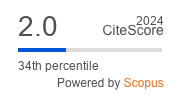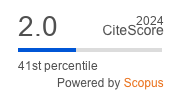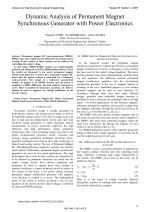| 2/2010 - 2 |
Dynamic Analysis of Permanent Magnet Synchronous Generator with Power ElectronicsONER, Y. |
| Extra paper information in |
| Click to see author's profile in |
| Download PDF |
Author keywords
permanent magnet DC motor, permanent magnet synchronous generator, Pulse Width Modulation
References keywords
energy(4)
No common words between the references section and the paper title.
About this article
Date of Publication: 2010-05-31
Volume 10, Issue 2, Year 2010, On page(s): 11 - 15
ISSN: 1582-7445, e-ISSN: 1844-7600
Digital Object Identifier: 10.4316/AECE.2010.02002
Web of Science Accession Number: 000280312600002
SCOPUS ID: 77954645093
Abstract
Permanent magnet DC motor-generators (PMDC, PMSG) have been widely used in industrial and energy sectors recently. Power control of these systems can be achieved by controlling the output voltage. In this study, PMDC-PMSG systems are mathematically modeled and simulated in MATLAB and Simulink software. Then the results are discussed. A low power permanent magnet synchronous generator is driven by a permanent magnet DC motor and the output voltage is controlled by a frequency cycle-converter. The output of a half-wave uncontrolled rectifier is applied to an SPWM inverter and the power is supplied to a 300V, 50Hz load. The load which is connected to an LC filter is modeled by state-space equations. LC filter is utilized in order to suppress the voltage oscillations at the inverter output. |
| References | | | Cited By «-- Click to see who has cited this paper |
| [1] M. Elosegui, and L. Fontan, "Analytical Design of Syhronous Permanent Magnet Motor/Generator", IEEE International Symposion on Industrial Electronics, Vigo, Spain, June 4-7, 2007. [CrossRef] [Web of Science Times Cited 5] [SCOPUS Times Cited 10] [2] S. Lyshevski, Electromechanical Systems, Electric Machines and Applied Mechatronics, CRC Press, 1999. [PermaLink] [3] J. Brahmi, L. Krichen, A. Ouali, "A Comparative Study Between Three Sensorless Control Strategies for PMSG in Wind Energy Conversion System", Applied Energy, vol 86, no. 9, September 2009, pp. 1565-1573. [CrossRef] [Web of Science Times Cited 70] [SCOPUS Times Cited 88] [4] I. Boldea, "The electric generators handbook. Variable speed generators", Taylor&Francis Group LLC, 2006. [PermaLink] [5] C. Mun Ong, "Dynamic simulation of electric machinery : using MATLAB/SIMULINK", Prentice Hall PTR, 1998. [PermaLink] [6] J.A. Sanchez, C. Veganzones, S. Martinez, F. Blazquez, N. Herrero, J.R. Wilhelmi, "Dynamic Model of Wind Energy Conversion Systems with Variable Speed Synchronous Generator and Full-Size Power Converter for Large-Scale Power System Stability Studies", Renewable Energy, vol. 33, no. 6, June 2008 pp. 1186-1198. [CrossRef] [Web of Science Times Cited 22] [SCOPUS Times Cited 32] [7] J. Jung, Sine-PWM Inverter, Phd. Student Project, The Ohio State University, U.S.A, 2005. Web of Science® Citations for all references: 97 TCR SCOPUS® Citations for all references: 130 TCR Web of Science® Average Citations per reference: 14 ACR SCOPUS® Average Citations per reference: 19 ACR TCR = Total Citations for References / ACR = Average Citations per Reference We introduced in 2010 - for the first time in scientific publishing, the term "References Weight", as a quantitative indication of the quality ... Read more Citations for references updated on 2025-05-31 07:48 in 22 seconds. Note1: Web of Science® is a registered trademark of Clarivate Analytics. Note2: SCOPUS® is a registered trademark of Elsevier B.V. Disclaimer: All queries to the respective databases were made by using the DOI record of every reference (where available). Due to technical problems beyond our control, the information is not always accurate. Please use the CrossRef link to visit the respective publisher site. |
Faculty of Electrical Engineering and Computer Science
Stefan cel Mare University of Suceava, Romania
All rights reserved: Advances in Electrical and Computer Engineering is a registered trademark of the Stefan cel Mare University of Suceava. No part of this publication may be reproduced, stored in a retrieval system, photocopied, recorded or archived, without the written permission from the Editor. When authors submit their papers for publication, they agree that the copyright for their article be transferred to the Faculty of Electrical Engineering and Computer Science, Stefan cel Mare University of Suceava, Romania, if and only if the articles are accepted for publication. The copyright covers the exclusive rights to reproduce and distribute the article, including reprints and translations.
Permission for other use: The copyright owner's consent does not extend to copying for general distribution, for promotion, for creating new works, or for resale. Specific written permission must be obtained from the Editor for such copying. Direct linking to files hosted on this website is strictly prohibited.
Disclaimer: Whilst every effort is made by the publishers and editorial board to see that no inaccurate or misleading data, opinions or statements appear in this journal, they wish to make it clear that all information and opinions formulated in the articles, as well as linguistic accuracy, are the sole responsibility of the author.



